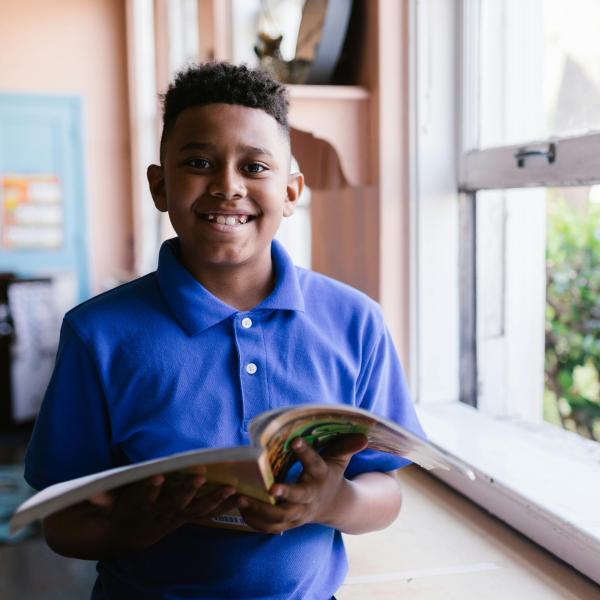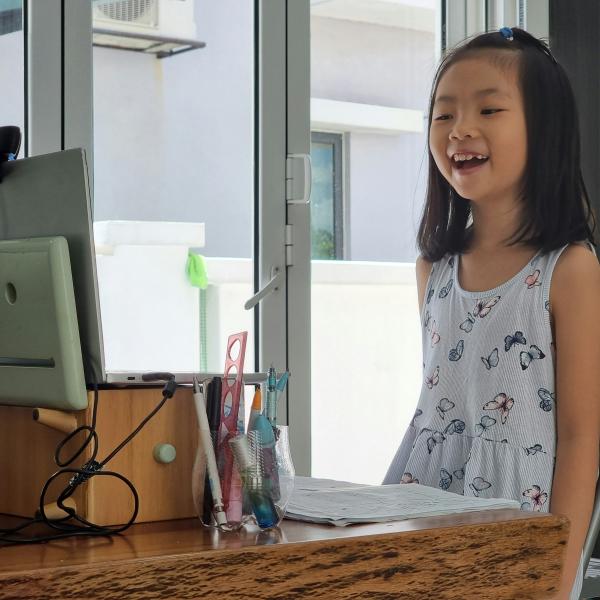
Beyond Grades: How Multi-Age Classrooms Empower Every Student to Thrive
What if classrooms weren’t divided by age?
At New Code Academy, we’re exploring a powerful idea: everyone benefits when students of different ages learn together. Through multi-age learning, we’ve reimagined what it means to meet students where they are—academically, socially, and developmentally.
Rather than being confined to grade-level boundaries, students in multi-age classrooms progress at their own pace. Whether they're soaring ahead in reading or taking time to master key math skills, they get the support they need, when they need it. And along the way, they learn from—and teach—each other.
Why Mixed-Age Classrooms Drive Success
Research shows that when students of different ages learn together, they often excel academically and socially. Here’s why:
- Kids learn from each other. Younger children model the behaviors and language of older peers, while older students reinforce their understanding by mentoring and explaining concepts. This kind of collaboration builds confidence and strengthens mastery.
“In our multi-age classrooms, I’ve noticed that younger students often come in with a surprising level of confidence and readiness—when they have older siblings in our school,” says Allie Kalkman, kindergarten teacher at New Code Academy. “They’re listening and learning from older siblings. That peer influence, even outside the classroom, adds another layer of connection and motivation.”
- Learning adapts to student needs. In a multi-age environment, education isn’t one-size-fits-all. Instruction is tailored to each student’s readiness, not their age. That means students can revisit concepts without stigma or move ahead without waiting.
Stronger connections with teachers and classmates. Staying with the same teacher for multiple years (sometimes called “looping”) helps students build deeper relationships, feel more confident, and develop a strong sense of belonging in the classroom. Teachers also gain a deeper understanding of each child’s learning style and needs, and family preferences.
“Because I stayed with the same group of students for another year, we were able to start the year so much faster — the kids already knew our classroom routines and procedures! It meant we could dive into academics much sooner!”
- Danika Tranby, First Grade Teacher, New Code Academy
How Teachers Support Blended Classrooms
Multi-age classrooms thrive because of intentional design. Teachers work closely together to:
- Plan activities that support a range of abilities.
- Differentiate instruction in real time.
- Create a cohesive classroom culture where every student feels included and valued.
It’s a balancing act—but when done well, it’s a powerful model of inclusive education.
Addressing Common Concerns
One question we often hear: Will older students be held back?
The answer is no. Many older students experience more challenge, not less. They engage in higher-level work while also practicing leadership, empathy, and communication by helping younger peers. Teachers make sure each student’s growth is supported individually, not uniformly.
“Older students often take on a sense of responsibility when younger students are in the classroom,” said Danika Tranby, first-grade teacher at New Code Academy. “Even if the younger ones don’t need much guidance, the older kids love stepping up and modeling positive behavior and maturity.”
Supporting ALL Learners
One of the greatest strengths of blended learning is the ability to support students with diverse learning needs, including those who need extra support and those who are ready for more advanced work.
Helping Students with Special Academic Needs
Because instruction is personalized, students with special academic needs receive support without being confined to grade-level expectations. Multi-age learning helps by:
- Allowing for flexible pacing, so students can revisit concepts as needed without feeling behind.
- Fostering an inclusive environment where different learning styles are embraced.
- Encouraging peer collaboration, as students naturally learn from one another in a supportive way.
Challenging Gifted and Advanced Learners
For gifted students, a multi-age classroom removes limits and provides opportunities to grow in meaningful ways:
- They can move ahead in subjects like math and reading when ready, rather than waiting for the next school year.
- They develop critical thinking and leadership skills by mentoring younger students, which helps reinforce their own understanding (you can’t teach what you don’t understand!)
- Instead of rote memorization, they engage in complex, open-ended projects that challenge creativity and problem-solving.
By removing rigid grade-level boundaries, multi-age learning helps all students grow in a way that matches their abilities.
Honoring the Whole Learner
Kids aren’t one-size-fits-all learners. A child might be way ahead in math but need extra support in reading—or vice versa. That’s completely normal. In a multi-age classroom, there’s room for those differences. Without rigid grade levels, students can move ahead where they’re ready and get help where they need it. It’s a flexible approach that meets kids where they are—and along the way, it helps build confidence, spark curiosity, and create a real sense of belonging.
“Honestly, there are so many advantages to multi-age classrooms and looping,” said Mrs. Tranby. “It’s been such a rewarding experience. I truly believe my students are growing so much more this year because of the range of academic and social interactions they’re getting every single day.”
A More Human Approach to Learning
Multi-age classrooms reflect something deeply human: we don’t all grow at the same pace, and we learn best in communities that support and challenge us.
At New Code Academy, we believe education should honor that truth. That’s why we’re committed to creating flexible learning environments where every student can thrive—on their own timeline, in their own way.
Interested in how multi-age learning could benefit your child? Keep exploring. Ask questions. We’re here to reimagine what school can be—together.


